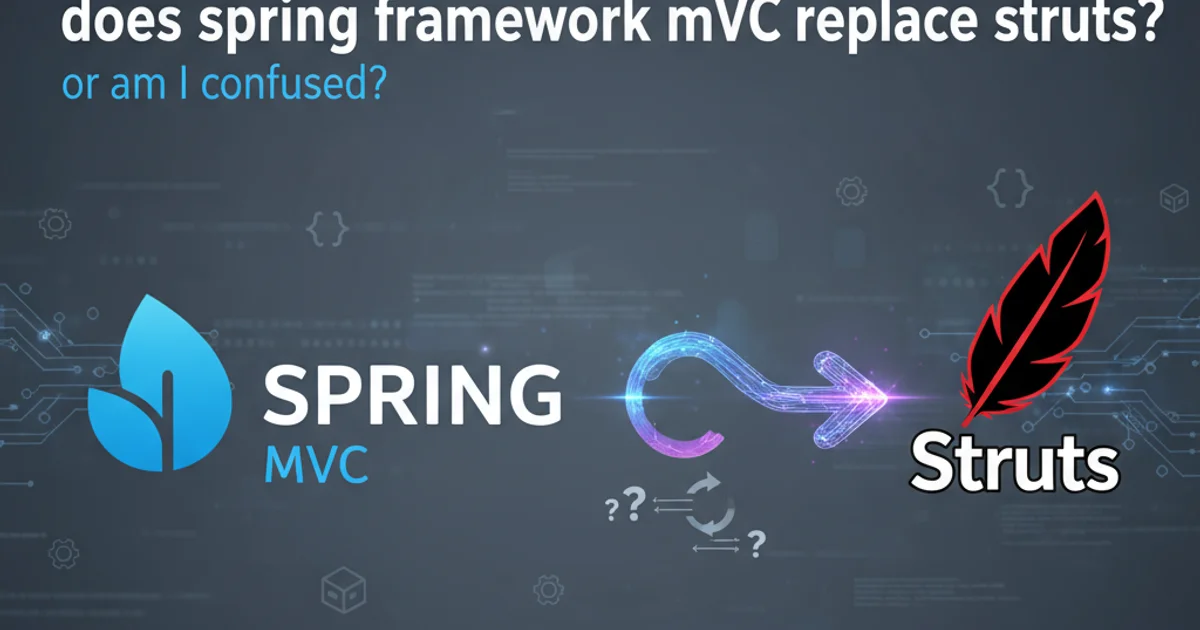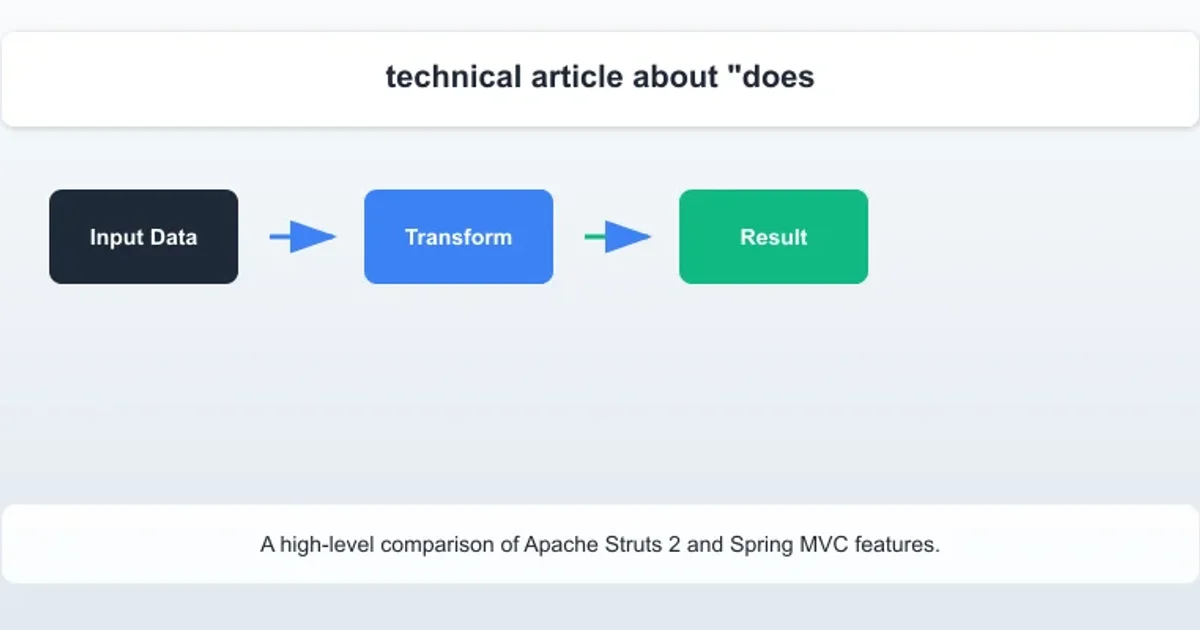does spring framework mvc replace struts? or am I confused?
Categories:
Spring MVC vs. Struts: Understanding Their Roles in Web Development

Explore the relationship between Spring MVC and Apache Struts, clarifying whether Spring MVC replaces Struts or if they serve different purposes in the Java web application landscape.
A common question for developers entering the Java web ecosystem is whether Spring Framework's MVC module completely supersedes older frameworks like Apache Struts. While both are Model-View-Controller (MVC) frameworks designed for building web applications, their approaches, evolution, and current relevance differ significantly. This article aims to clarify their relationship, highlight their distinct characteristics, and help you understand when and why you might choose one over the other.
The Evolution of Java Web Frameworks
To understand the relationship between Spring MVC and Struts, it's crucial to look at the historical context of Java web development. Apache Struts was a pioneering framework, providing a structured way to build web applications long before Spring MVC gained widespread adoption. It introduced many concepts that are now standard in MVC frameworks, such as action-based processing and form handling. Spring MVC, on the other hand, emerged as part of the broader Spring Framework, which emphasizes dependency injection, aspect-oriented programming, and a more integrated approach to enterprise application development.
flowchart TD
A[Early Java Web Dev] --> B[Servlets/JSP]
B --> C[Apache Struts 1.x]
C --> D[Apache Struts 2.x]
D --> E[Spring MVC (part of Spring Framework)]
E --> F[Modern Microservices/Reactive Stacks]
C --"Influenced"--> E
D --"Influenced"--> E
E --"Dominant in Enterprise Java"--> FEvolution of Java Web Frameworks
Key Differences: Struts vs. Spring MVC
While both frameworks adhere to the MVC pattern, their architectural philosophies and implementation details vary. Struts (especially Struts 2, which is a complete rewrite of Struts 1) is an action-based framework where requests are mapped to 'Actions'. Spring MVC, conversely, is method-based, mapping requests to handler methods within 'Controllers'. Spring MVC's tight integration with the Spring ecosystem provides benefits like easy access to Spring's dependency injection, data access, and security features, making it a more comprehensive solution for many enterprise applications.

A high-level comparison of Apache Struts 2 and Spring MVC features.
Is Spring MVC a Replacement for Struts?
In most modern Java web development scenarios, Spring MVC (or Spring WebFlux for reactive applications) is the preferred choice and has largely superseded Struts for new projects. Spring MVC offers a more flexible, testable, and integrated development experience, aligning well with contemporary software engineering practices like RESTful services and microservices architectures. While Struts applications still exist and are maintained, new development rarely starts with Struts. Therefore, for practical purposes, if you're starting a new Java web project today, Spring MVC (or its Spring Boot integration) is the de facto standard, effectively replacing the need for Struts in most cases.
@Controller
public class MySpringController {
@GetMapping("/hello")
public String sayHello(Model model) {
model.addAttribute("message", "Hello from Spring MVC!");
return "helloView"; // Resolves to helloView.jsp or helloView.html
}
}
A simple Spring MVC Controller example
<!-- Example struts.xml configuration for an Action -->
<package name="default" namespace="/" extends="struts-default">
<action name="hello" class="com.example.actions.HelloAction">
<result name="success">/WEB-INF/jsp/hello.jsp</result>
</action>
</package>
A simplified Struts 2 Action configuration